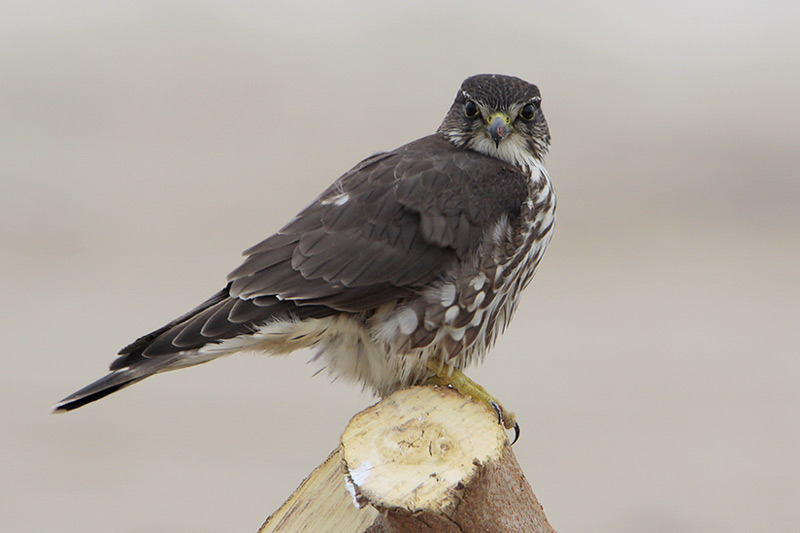Merlins (Falco columbarius) are small and versatile falcons found in the Holarctic. They are swift, acrobatic fliers that often hunt on the wing.
In North America, there are three Merlin subspecies, so identifying them can be a bit of a headache. However, worry not, for we cover the basics here!
On this page
Identification
Merlins have nine subspecies with differences in range and plumage. Three of them – taiga, prairie, and black Merlin – live in North America. They have a compact, streamlined, and powerful body with a broad chest, pointed wings, and a medium tail. These small falcons measure 9.4-13 inches long with a wingspan of 20-29 inches. Females are larger than males.
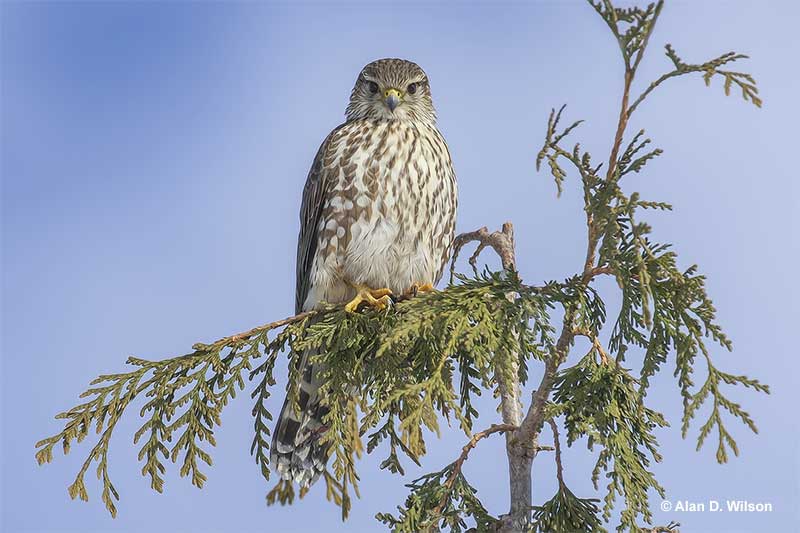
Overall, male Merlins are bluish-gray or dark above and cream to rich buffy below with heavy dark streaking. Their tails have narrow white bands and their throats are unmarked.
Female Merlins are brown overall and paler and heavily streaked below. In flight, look out for pointed wings, a rounded tail, and heavy streaking. Both sexes generally have an eyebrow stripe and a “mustache.”
Here are the subspecies in more detail:
- Taiga Merlin – Male Taiga Merlins are bluish-gray above and pale cream to buff below with brown streaking. They have unmarked throats but fine brown streaking on their pale cheeks. Females are medium brown above and warm pale brown below with dark brown streaking.
- Prairie Merlin – Male Prairie Merlins are pale gray above, pale rust-colored below with darker streaking, a white throat, and pale reddish face with fine streaking. Female Prairie Merlins are lighter brown above, and pale below with pale brown streaking.
- Black Merlin – very dark overall. Almost black above and a bit lighter and streaked below.
Vocalizations
Merlins produce rapid chattering that may sound like cackling, especially during courtship displays or aggressive encounters. It lasts for around 4 seconds.
They also give klee-klee-klee calls, but those are generally rather quiet. Their contact call is a short chip, which is higher pitched in males.
Food
Merlins are carnivorous birds of prey that often specialize in hunting the most common species in the area. The primary component of Merlin’s diet is small birds, which make up around 80% of their diet.
They are known to prey on songbirds, shorebirds, and other small passerines, including finches, sparrows, and larks. The other 20% is made up of insects, small mammals, reptiles, and amphibians. This includes dragonflies, beetles, butterflies, grasshoppers, moths, rabbits, shrews, mice, voles, bats, lizards, and snakes.
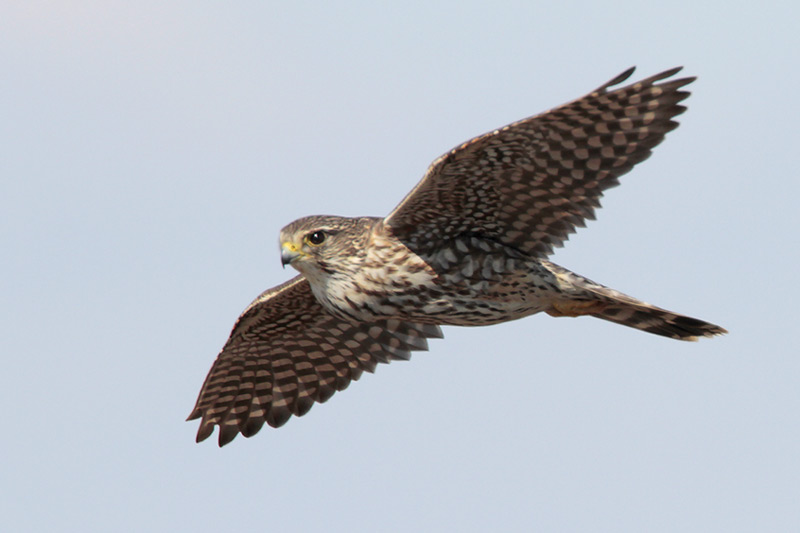
Merlins have various hunting methods depending on what they’re currently hunting. They often hunt by flying low above the ground and catch their prey mid-air. During the breeding season, mates often hunt in pairs, with one flushing the prey towards the other.
They may also hunt by surveying the area from a perch and then attacking suitable prey items by dashing after them. Flying high and then diving is rarer.
Nesting and Eggs
Merlins are monogamous but the majority find a new partner for the next breeding season. Males arrive earlier than females and become aggressive towards other Merlins and birds of prey. In courtship, males put on spectacular display flights by doing dives, glides, twisting flights, and fluttering. They also bring food to females.
Merlins nest 10-60 feet above the ground in old raven, magpie, hawk, or crow nests. If there is no other option, they may also go for tree cavities or cliffs. They do not build their own nest and make very little, if any, changes to the nest they found.
Merlins raise one brood a year with 2-6, mostly 4-5 eggs in a clutch. The eggs are rusty brown with darker markings and measure 1.5-1.7 inches long and 1.1-1.3 inches wide. Incubation lasts for 28-32 days with the female doing most of it, although the male switches with her sometimes so the female can eat.
After the eggs hatch, the female broods the young while the male hunts for food. The young fledge at around 25-30 days and depend on their parents for 4 more weeks. However, they start catching their own food, mainly large insects, at around the 2-week mark.
Current Situation
Merlins are adaptable and are found across most of the Holarctic. In the Americas, they breed in Alaska, Canada, and the northernmost areas of the United States and migrate to the western and southern United States, Central America, and northern South America for the winter. A part of the population along the northwestern coast of North America is resident.
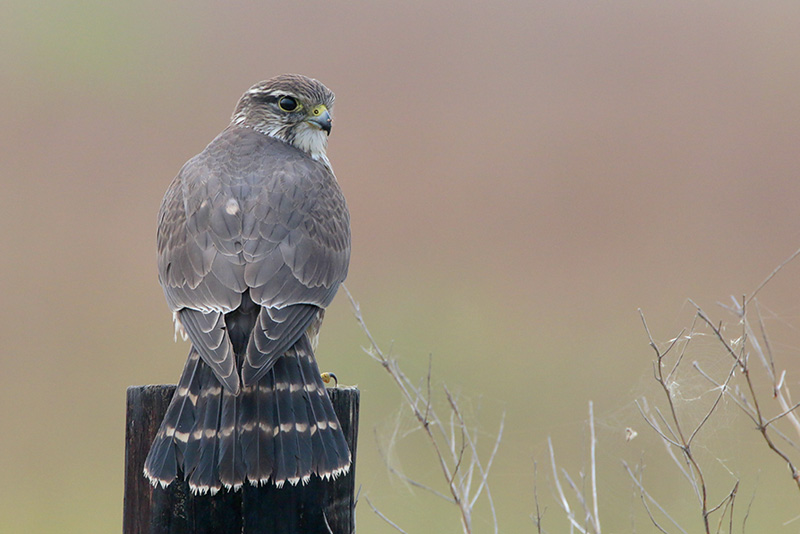
Merlins’ habitat preferences vary slightly depending on the season. During the breeding season, they are generally found in semi-open areas that offer both suitable nesting sites, abundant prey, and suitable hunting grounds.
This includes habitats like open coniferous woodlands, prairie groves, suburban yards, are fragmented woodlots near bodies of water. During migration and in the winter, they are often found in more open areas, such as open country, grasslands, coastal marshes, steppes, or even suburban and urban areas.
Merlins are listed as of least concern on the IUCN Red List, at least when it comes to their overall population in North America. However, they are threatened by habitat loss, which is somewhat counteracted by the fact that they have adapted to urban environments rather well.
Facts
- Merlins are commonly used in falconry and were considered a bird for the ladies. They were used to hunt small game.
- Merlins look similar to pigeons when they’re flying, which is why they’re also known as pigeon hawks. I’ve also seen birds mistakenly mobbing pigeons because they look fairly similar to birds of prey while they’re flying.
- Merlins are relatively small falcons, but they are known for their bold and aggressive behavior, especially during the breeding season when defending their territory.
- Merlins live for 6-8 years in the wild. The oldest individual on record was 11 years and 11 months old.
Similar Species
Telling the difference between similar falcons is not an easy task. Merlins have quite a few similar species, but we’re here to help you make sense of it. Here are three of the most similar species and what to look out for.
American Kestrel
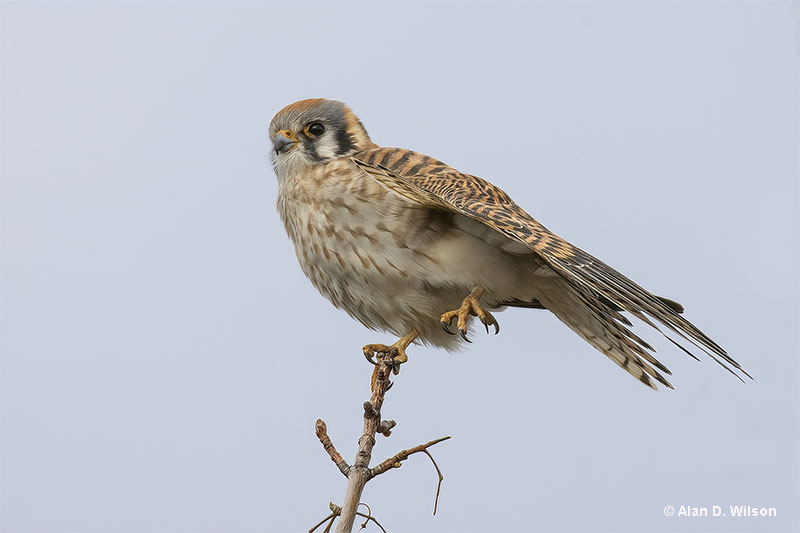
American Kestrels can be seen across most of North America. Males have slaty-blue caps and wings and brown backs with black barring and pale undersides. Females are warm brown above and pale below with rusty streaking.
Compared to Merlins, American Kestrels are slenderer, smaller, and paler. Male Merlins aren’t two-toned above and lack the facial markings the American Kestrels have. Female Merlins are uniformly colored above whereas female American Kestrels have barring. In flight, Merlins are more heavily streaked whereas American Kestrels have an unmarked lower belly.
Prairie Falcon
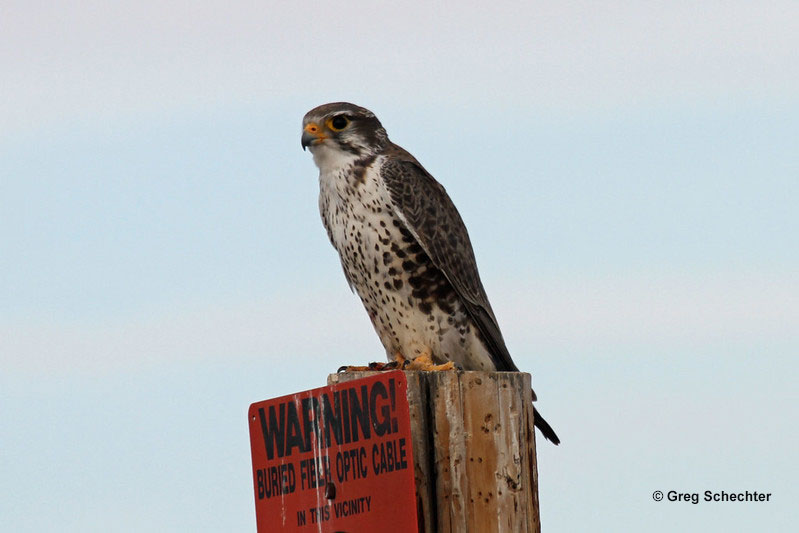
Prairie Falcons range throughout the western United States and northern Mexico. They are brown above and pale below with dark markings on the breast, belly, and wing lining. Compared to Merlins, their markings are smaller, but their “mustache” is much more pronounced. In flight, Merlins are uniformly barred and streaked whereas Prairie Falcons are much paler, cleaner, and have dark “armpits”.
Peregrine Falcon
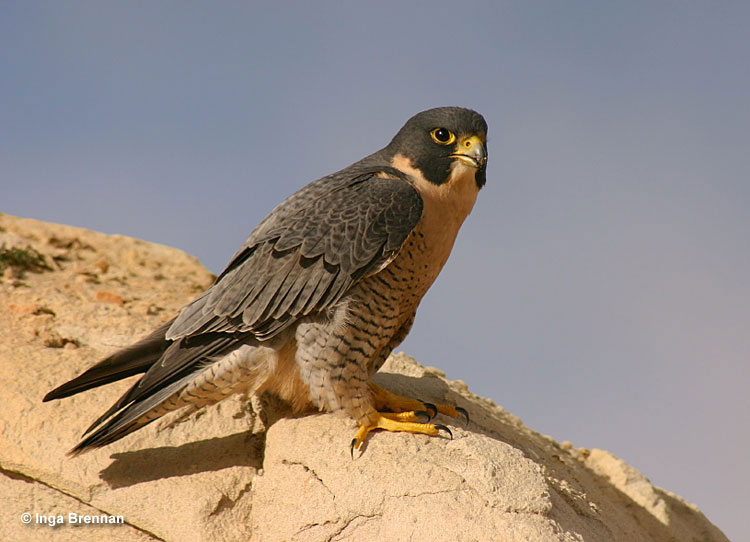
Peregrine Falcons range throughout North America and Mexico. They have rather dark gray upperparts, pale underparts with dark barring, a pure white breast, and they look like they’re wearing a helmet. Juveniles are a bit paler and have densely streaked underparts.
Compared to Merlins, Peregrine Falcons are larger and have finer barring on their undersides. They have a distinct helmeted look instead of having eyebrows and a mustache.
Frequently Asked Questions
How did Merlin get its name?
Merlin got its name from the Old French esmerillon.
What is the difference between a hawk and a Merlin?
Hawks and Merlins are both raptors, but they belong to different genera (Accipitridae and Falconidae respectively), vary in size, body shape, hunting techniques, and more.
Is a Merlin bigger than a kestrel?
Merlins are slightly smaller than American Kestrels.
How fast can Merlins fly?
Merlins can fly at more than 30 miles per hour.

